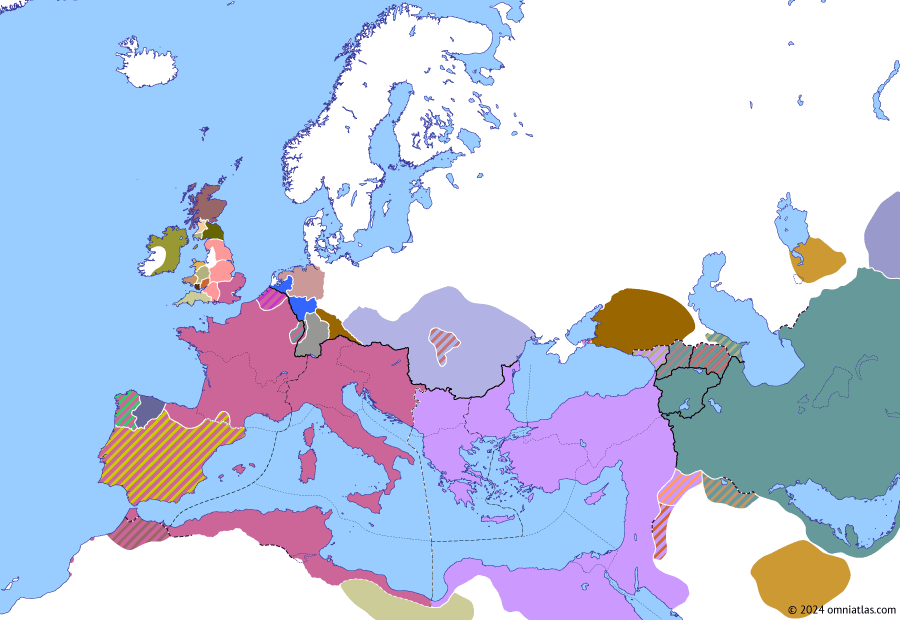Europe 418: Recovery of Gaul
fall 418
fall 418
Theodosian Dynasty: The West Besieged
-27–68 Julio-Claudian Dynasty
68–96 Flavian Dynasty
96–192 Nerva–Antonine Dynasty
192–235 Severan Dynasty
235–268 Crisis of the Third Century: Turmoil
268–284 Crisis of the Third Century: Restoration
284–311 Diocletian and the Tetrarchy
311–363 Constantinian Dynasty
363–383 Valentinianic Dynasty
383–408 Theodosian Dynasty: Divided Empire
408–425 Theodosian Dynasty: The West Besieged
425–442 Theodosian Dynasty: Fall of Africa
442–1803 NO MAPS FOR THIS PERIOD YET
1803–1814 Napoleonic Wars
1814–1815 Vienna and Waterloo
1815–1848 Congress Europe
1848–1850 Springtime of Peoples
1850–1859 Crimean War
1859–1862 Italian Unification
1862–1871 German Unification
1871–1914 Imperial Europe
1914–1918 Great War
1918–1922 Armistice Europe
1922–1939 Rise of Fascism
1939–1942 World War II: Blitzkrieg
1942–1945 World War II: Fall of the Third Reich
1945–1990 Cold War
1990–2010 Post-Cold War Europe
2010–pres Crisis of Europe
Recovery of Gaul
Dec 408 Alaric’s First Siege of Rome
spr 409 Gerontian Revolt
12 Oct 409 Vandalic invasion of Spain
early 410 Rescript of Honorius
24 Aug 410 Alaric’s Sack of Rome
spr 411 Downfall of Constantine III
18 Sep 411 Revolt of Jovinus
mid 412 Athaulf and Jovinus
spr 413 Revolt of Heraclian
late 414 Athaulf and Galla Placidia
early 416 Wallia–Euplutius Treaty
spr 417 Wallia’s Spanish War
fall 418 Recovery of Gaul
early 420 Battle of the Nervasos Mountains
8 Feb 421 Constantius III
early 422 Persian War of 421–422
sum 422 Battle of Tarraco
20 Nov 423 Usurpation of Joannes
May 425 Defeat of Joannes
While Wallia’s Goths crushed the Alans and Siling Vandals in Hispaniae (416–418), the Western Roman generalissimo Flavius Constantius set about restoring Roman rule in Gaul. This was largely successful and by 418 the Romans had reestablished themselves in Armorica and northern Gaul, and possibly even mounted a brief return to Britain.
This map has in-depth notes in the Journal, exclusive to Patrons on Classical Tier and above. Find them in the events descriptions, marked with the Journal icon .
